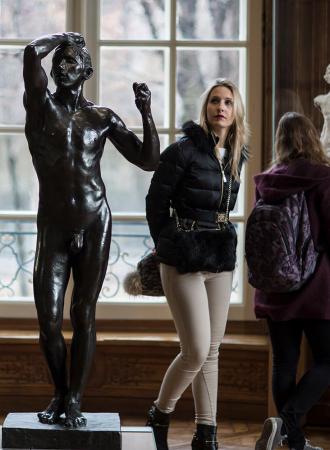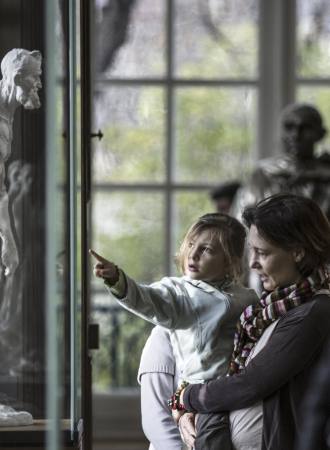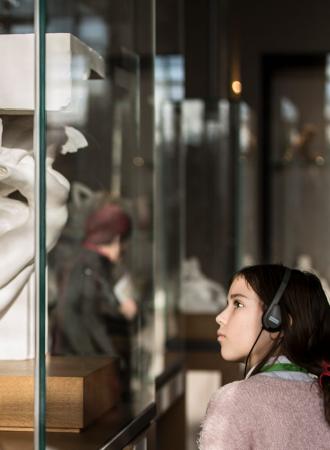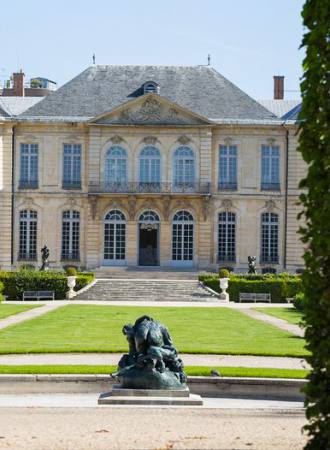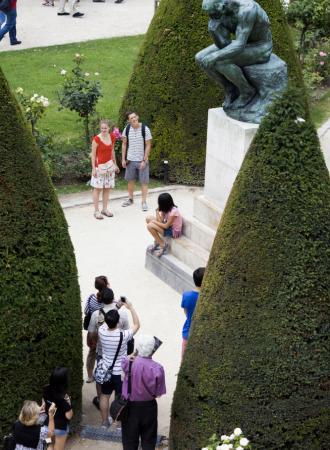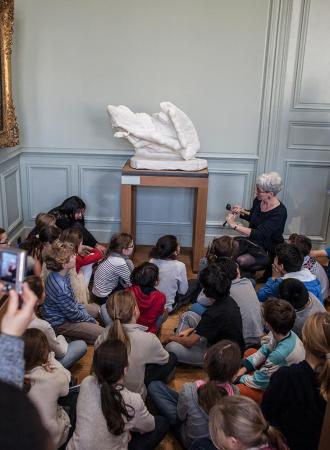Search the site
Auguste Rodin - Displacements
Extramural
Thanks to the museum’s founder, Carl Jacobsen (1842-1914), Ny Carlsberg Glyptotek possesses a unique collection of works by Auguste Rodin. Jacobsen amassed a huge collection of ancient artefacts and French art, in which Rodin’s works had pride of place.
The exhibition, Auguste Rodin – Displacements sheds light on Rodin’s own collection of antiquities, presented alongside his own sculptures.
This will be the first-ever exhibition in Denmark to present Auguste Rodin’s own collection of antiquities in dialogue with the artist’s own works. The encounter between Rodin’s sculptures and his collection of ancient artefacts will provide visitors with new insight into the artist’s creative process.
From antiquity to modernity
Many people regard Auguste Rodin (1840-1917) as the harbinger of modern sculpture – the man who unshackled the art form from its conventions and traditions. While it is up for debate whether he is the only artist to deserve this title, this reputation has persisted, and his highly expressive, intensely dramatic works served as a source of inspiration well into the 20th century. However, in order to truly understand Rodin, we need to take into account his relationship with antiquity.
What fascinated Rodin about antiquity was not merely the canonised masterpieces, but also the shattered fragments and broken objects. Rodin started collecting ancient artefacts in his fifties. By the time of his death, he had accumulated more than 6500 objects: Greco-Roman statues, pottery from China, Egyptian vases, and Japanese masks. They assumed a predominant position in Rodin’s home and studio: not only as a source of inspiration, but also as part of his own self representation.
Displacements
Auguste Rodin – Displacements provides an insight into how Rodin incorporated his collection of antiquities into his working process. Despite its size, the collection, as part of Rodin’s life and practice, has been disregarded, leaving us with a couple of questions. Why did Rodin collect, and what role did the collection play?
For the artist, the collection provided a unique space where he could experiment with the displacement of works and objects in a variety of ways, thereby shedding new light on them. Hence, his collection of antiquities became crucial to Rodin’s sculptural experiments, which featured fragmentations, transformations and stagings.
Staging
The exhibition presents both a selection of works from the Glyptotek’s own Rodin collection and works and objects loaned from the Musée Rodin in Paris. The set designers Anja Kragh Vang and Mia Steensgaard have created a sensuous setting, in which all the works are displayed. This setting reflects Rodin’s own theatrical way of exhibiting works, while interacting with the architecture of the museum’s historic rooms.
Auguste Rodin – Displacements is the first time that Rodin’s collection of ancient works and archaeological objects are featured in a major, research-based, special exhibition, which sheds light on the collection on the basis of an exchange between art history, archaeology and museology. The exhibition is the result of an innovative research project at Ny Carlsberg Glyptotek and Aarhus University, conducted by the curator/PhD student, Christine Horwitz Tommerup.
The exhibition is a collaboration with the Musée Rodin in Paris and generously supported by the Augustinus Fonden and Aage og Johanne Louis-Hansens Fond. The research project is funded by the New Carlsberg Foundation.
Exhibition(s) location(s)
Ny Carlsberg Glyptotek, Danemark
Dates
From 25 March to 15 August, 2021
Price(s)
Free to 115 DKK
